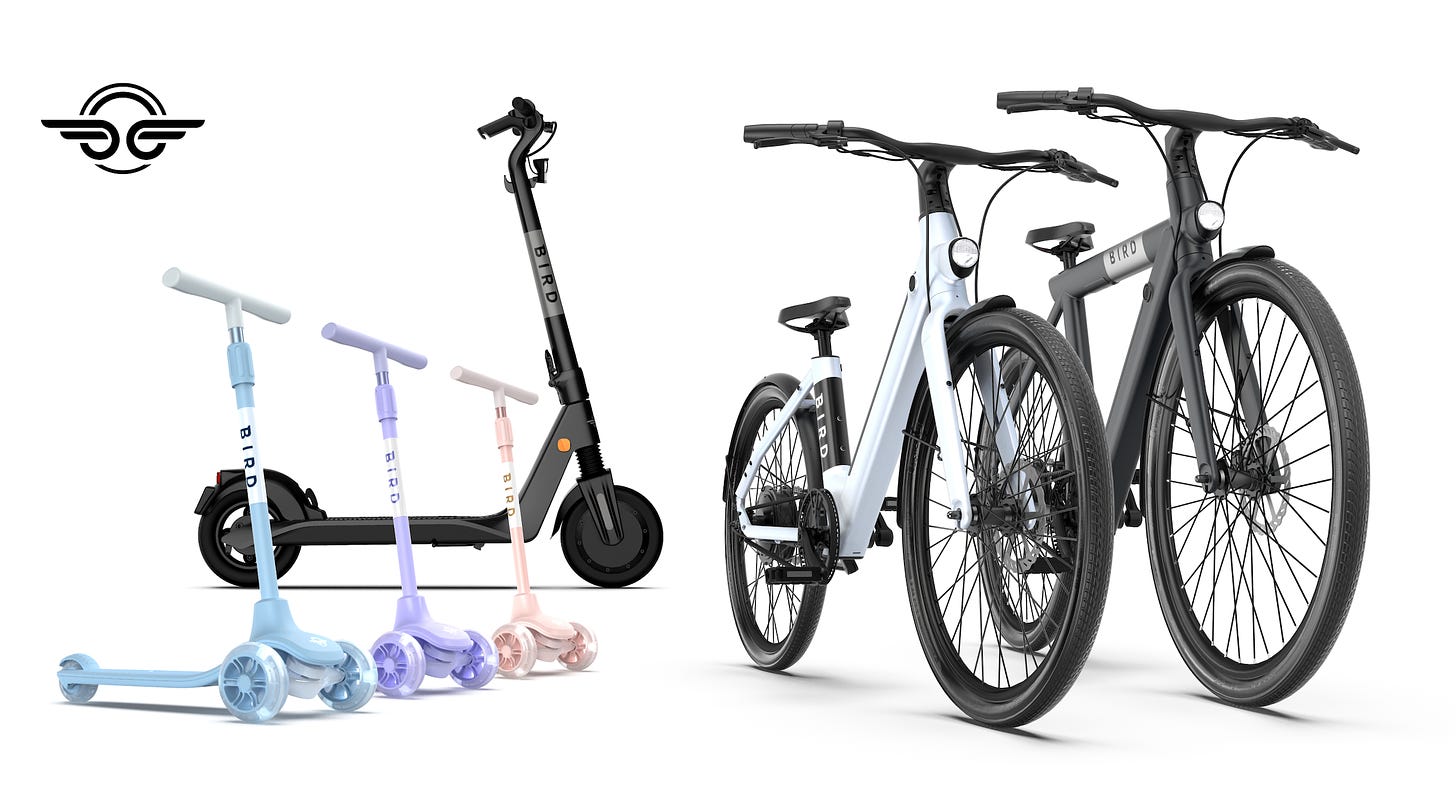What's Ahead for Micromobility
A Conversation with Bird's Senior Vice President of Global Policy
Hey everyone!
Welcome back to UrbanTech — your favorite newsletter for all things cities and tech. This edition features a conversation I had with Brian Buccella, Senior Vice President of Global Policy at Bird.
Brian shared his insights on the current state of micromobility and where he thinks the sector is going.
I hope you enjoy!
What trends are you noticing in micromobility coming out of the pandemic?
The pandemic created tailwinds for the industry by opening many people’s eyes to the benefits of micromobility – particularly those who may not have embraced alternative modes of transportation previously. During a period when public transportation options were limited or felt unsafe, shared micro-electric vehicles proved to be a reliable and naturally socially distanced way for essential workers and others who needed to continue moving around their cities to do so. At the same time, roads were emptier and many cities started to invest more in bike lanes and other micro-EV infrastructure.
As a whole, where do you think the sector is going? Are you more optimistic about it or less after COVID?
As more communities and individuals embraced micro-EVs as an eco-friendly and convenient way to get around during the pandemic and later amidst soaring gas prices, cities took note. Not just big cities, though – cities of all sizes. In 2021, Bird entered over 250 cities with populations under 500,000 and we recently announced a number of exclusive Bird launches accelerating the global growth and adoption of micro-electric mobility after COVID, including places like Bend, Oregon; Pittsfield, Massachusetts; Galve, Sweden; and Lido di Camaiore, Italy. This growth paired with major cities like New York expanding existing micromobility programs indicate a bright future for the industry.
Is there any interesting battery technology that I should be watching or keep my eyes on in regards to micromobility?
The sustainability, lifespan and performance of micro-EVs is largely dependent on the battery. There are a couple things that set apart the Battery Management System (BMS) in our latest shared e-scooter, the Bird Three – which was developed by Bird’s in-house team of top engineering and vehicle design experts. Bird is the first and only operator using industry-leading IP68-rated battery cell packs, the most protected shared e-scooter battery against dust and water damage in the world. Plus, our BMS enables us to monitor and take rapid action in cases of safety or sustainability issues like battery failures. Finally, the Bird Three’s battery has a capacity of up to 1kWH, requiring less frequent charging than many other shared scooters.
How many markets are you in now? What market(s) are you excited about that you're not in?
We’re proud to serve more than 400 communities globally and always excited to partner with the next city looking to improve air quality, get cars off the road and encourage mode shift from gas-powered vehicles to eco-friendly micro-EVs. In the US, we're excited to have scooters re-enter cities, like Dallas, to provide transportation options to the community after the city studied a pilot program. At the same time, as we continue to partner with cities of all sizes, we’re particularly interested in expanding our footprint in broader metro areas to provide reliable micromobility programs spanning across communities. For example, we’re currently operating in Kansas City, Missouri, as well as a number of nearby cities including North Kansas City, Overland Park, Liberty, Leavenworth, Olathe and Kansas City, Kansas. By operating in this cluster of communities, we believe we can build a more connected and safer Kansas City metro area – especially for those commuting between cities who will already be familiar with our service.
What do you think is holding micromobility back as a sector?
Many cities have made great progress in building out infrastructure that supports and encourages residents and visitors to utilize micro-EVs. But we still need to push for more bike lanes and designated parking areas in those cities where there’s a missed opportunity to make opting for micromobility options safer and more seamless. Taking space away from gas-powered cars may be painful at first but we know that people are willing to get out of their cars at the same time that cities are setting ambitious climate goals. For instance, did you know that just one car parking space on the street could easily fit 10 e-scooters? In the United States, car trips of under a mile add up to about 10 billion miles per year – the ideal distance for an e-scooter trip. Now we just need the infrastructure to be ubiquitous so people can ride safely.
What didn't I ask that I should have?
One often overlooked benefit of e-scooters is their economic impact. As tourism continues to pick up, cities with e-scooters will see additional incremental spending at local businesses, according to a study at Emory University. In 2021 alone, Bird riders spent an estimated $100M in our partner cities, mainly at local food and beverage establishments.


